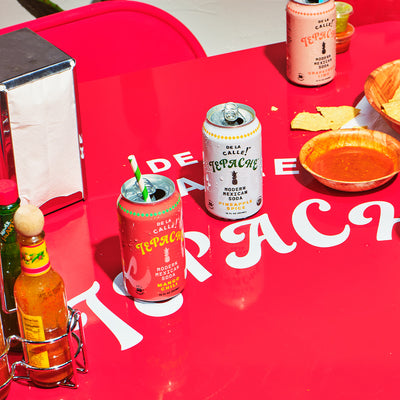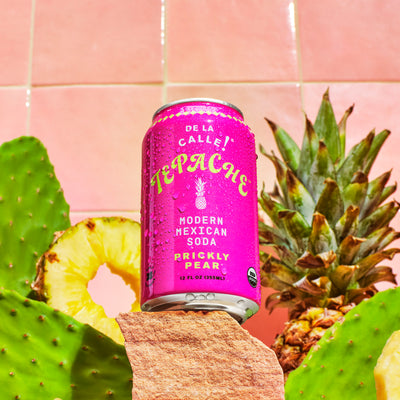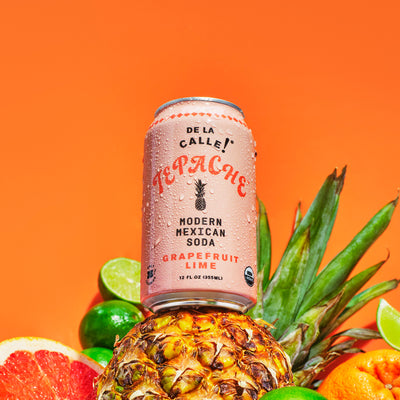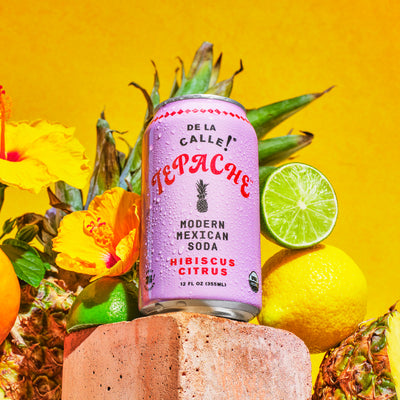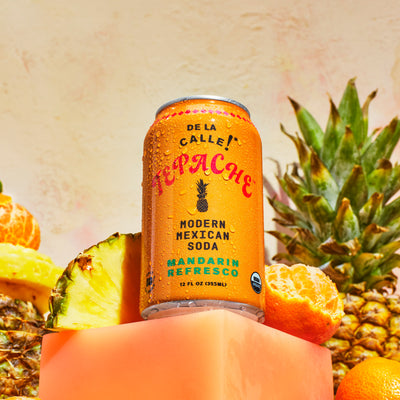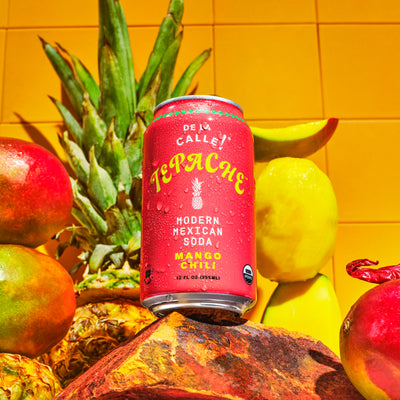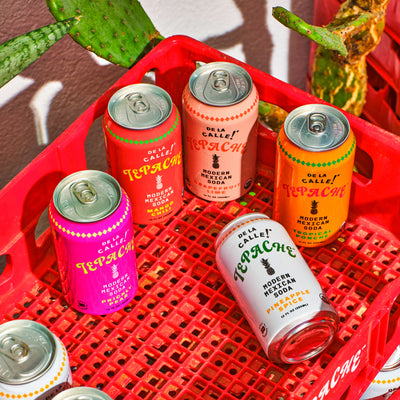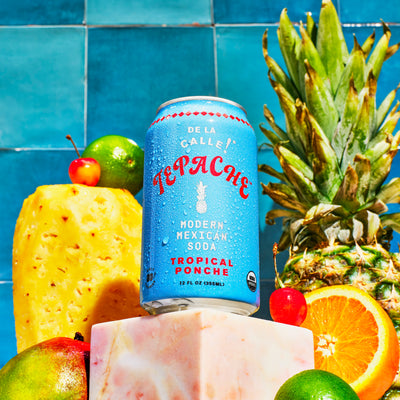Probiotics vs. Prebiotics: What's the Difference?

Although we’re accustomed to thinking of bacteria as the cause of illness and infection, there’s actually a whole bunch of bacteria that your body needs to function properly.
One group of beneficial bacteria can be found in the gut and aids in food digestion, inflammation regulation, communication with the immune system, and many other vital tasks is probiotics. In this article, we’ll take a look at probiotics and prebiotics, two essential ingredients for a healthy gut, and breakdown the differences between them.
Probiotics and Prebiotics: The Basics
Both probiotics and prebiotics are crucial parts of a healthy digestive system. Probiotics are living organisms, usually bacteria, that add to the naturally occurring population of healthy microbes in your gut. The two main types of naturally occuring gut bacteria are lactobacillus and bifidobacterium. Adding probiotics to your diet aids these two bacteria in maintaining your gut health.
While probiotics are living microorganisms, prebiotics are the food source for the good bacteria in your digestive system. For the most part, prebiotics are types of fiber that humans can’t digest but the bacteria in your gut can. The key to maintaining a healthy gut is eating the right balance of probiotics and prebiotics to adequately support your gut microbiome.
The Gut Microbiome
The gut microbiome, or the gut flora, refers to all the microorganisms living in the intestines, which can include anywhere from 300-500 different types of bacteria. Having a diverse, healthy assortment of bacteria in the cut can support your immune system function, help manage metabolism, and improve mental wellness.
Some bacteria in the gut also work to form vitamin K and short-chain fatty acids which provide nutrients to the cells that line the colon. It’s crucial that these cells are strong and healthy because they defend your body from viruses, bad bacteria, and anything that could potentially harm your digestive system.
In general, the health of your gut is indicative of your overall bodily and mental health. For this reason, high stress levels, sleep deprivation, and an unhealthy diet can all lead to compromised gut health.
Probiotics
Probiotics are essentially reinforcement bacteria for all the good bacteria that naturally resides in your gut, although different types of yeast can also act as probiotics. They are living organisms that you ingest either through food or supplements and can survive in your gut.
Probiotic is the general name for any bacteria or yeast that helps the preexisting bacteria in the gut. However, there are several different species of probiotics some of which address slightly different health conditions. Alongside Lactobacillus and Bifidobacteria, other common types of probiotics are Saccharomyces, Streptococcus, Enterococcus, Escherichia, and Bacillus.
One of the most common uses of probiotics is to fight off the diarrhea that often occurs when taking antibiotics. Antibiotics kill off the natural good bacteria in the gut, so probiotics are needed to restore the proper bacterial balance. This usage of probiotics points to how they can improve digestion and help your body achieve a healthy bacterial equilibrium.
Everyday Probiotics
The most common form of probiotic food is yogurt because it contains ample amounts of beneficial bacteria. Yogurt is made by fermenting milk with healthy bacterial strains. These bacterial strains are left in the final product and act as probiotics when digested.
Generally speaking, fermented foods are also a wonderful way to get a healthy dose of probiotics. Other popular fermented foods that are rich with probiotics include sauerkraut, kimchi, kefir, pickled vegetables, and Tepache, a delicious traditional Mexican drink made from fermented pineapple.
It’s important to keep in mind that only unpasteurized fermented foods contain natural probiotics because the pasteurization process kills off all bacteria in the food.
Prebiotics
If probiotics are like plants, then prebiotics are the fertilizers needed to promote their growth. Prebiotics are usually dietary fibers that your body cannot digest but probiotic bacteria can.
Although prebiotic supplements are available, several foods naturally contain prebiotic fiber that will sustain the microbes in your gut.
While prebiotics are beneficial when consumed in conjunction with probiotics, there’s not much research to suggest any positive health benefits from consuming straight prebiotics (in the form of supplements) on their own.
Everyday Prebiotics
Prebiotic foods for the most part are vegetables, fruits, legumes, and whole grains because they are all high in complex carbohydrates such as fiber and resistant starch. Both of these are prebiotics because they cannot be processed by your body and can therefore make it through your digestive tract to your colon where they become food for the bacteria and microbes.
Here’s a list of foods that are filled with prebiotics:
- Whole-grain oats
- Bananas (especially green, less-ripe bananas)
- Potatoes (especially cold, boiled potatoes)
- Jerusalem artichokes
- Garlic
- Onions
- Berries
- Legumes
- Asparagus
- Beans
- Peas
- Yams
Synbiotics
Given that you need both prebiotics and probiotics to maintain a healthy gut, you might be thinking: are there any foods that contain both? Luckily, the answer is yes! Foods that contain both prebiotics and probiotics are called synbiotics.
Everyday Synbiotics
Much like prebiotics and probiotics, synbiotics can be purchased on their own in the form of supplements. However, luckily for us, several foods are natural synbiotics. Certain types of yogurt are synbiotics as well as cheese and kefir.
Supplements
Although there are several foods that naturally contain probiotics, prebiotics, and synbiotics, some people opt to take supplements to ensure that they’re getting enough probiotics and prebiotics in their diet.
For the most part, taking these supplements is healthy and can be beneficial for healthy people. It is believed that some supplements can help to alleviate the symptoms of diarrhea, IBS, and perhaps even the common cold because they boost your immune system.
However, it’s important to keep in mind that probiotics and prebiotics are not regulated by the FDA which means that some of the bacteria in probiotic supplements has not been strictly researched. For this reason, it’s important to keep track of how your body responds to different supplements and make sure that if you have any sign of an allergic reaction you stop taking that supplement.
Although supplements can be beneficial, it’s generally agreed upon that the best way to maintain a healthy balance of probiotics and prebiotics in your gut is through a well balanced diet.
How do I know if my gut is healthy?
There’s a few ways to know if your gut is healthy or if you need to make some slight dietary changes to achieve the right balance of good and bad bacteria. The most noticeable sign of an unhealthy gut is if you have a consistently upset stomach and experience lots of bloating, gas, etc. A few other signs of an unhealthy gut are consistent tiredness, skin irritation, and a weakened immune system.
If you have a healthy gut, you’ll most likely have a bowel movement at least once a day that is easy to pass and, for the most part, you won’t have consistent stomach pain.
Summary
You need a good balance of both probiotics and prebiotics to maintain a healthy gut. Thankfully, both can be found in lots of delicious foods and drinks such as sauerkraut, kimchi, kombucha and Tepache! The primary difference between the two is that probiotics are bacteria that help the natural bacteria in the digestive system and prebiotics are the food for probiotic bacteria.
Some foods such as cheese and certain yogurts are called synbiotic because they contain both probiotics and prebiotics. Although you can take supplements to maintain a bacterial balance in your gut, the best way to foster a healthy balance of probiotics and prebiotics is through a nutritious, diverse diet!
Sources:
https://www.healthline.com/health/cold-flu/good-bad-germs

